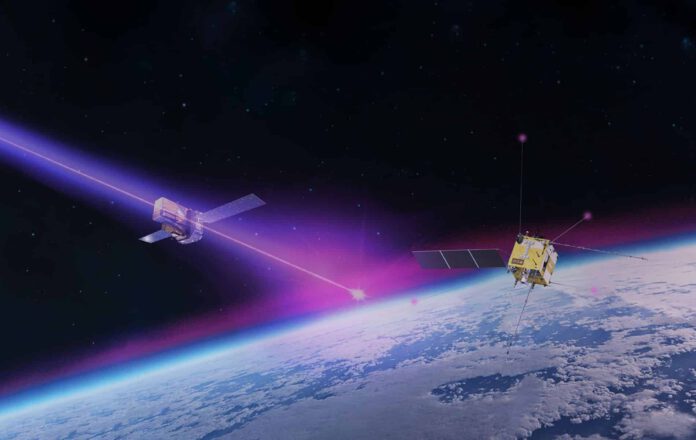
The gamma-ray burst, which has been identified as the brightest ever recorded, may provide crucial insights into the causes of mass extinctions in the Earth’s history.
Notable Cosmic Event
Last Thursday, there was a notable occurrence. The International Gamma-Ray Astrophysics Laboratory (Integral) telescope picked up a peculiar signal. It turned out to be an extraordinarily bright and long-lasting gamma-ray burst (GRB), dubbed GRB 221009A. This gamma-ray burst is unlike any others we have seen thus far, researchers reported in the journal Nature Communications. “It was probably the brightest we have ever observed,” says researcher Mirko Piersanti.
Scientists have been measuring gamma-ray bursts since the 1960s. But GRB 221009A proves to be an unusual case. “It is the most powerful ever measured,” says co-author Pietro Ubertini. The burst was so powerful that the previous comparable burst in the archives was ten times weaker. Statistically, a gamma-ray burst of the caliber of GRB 221009A occurs only once every 10,000 years.
Meanwhile, on Earth
The gamma-ray burst did not go unnoticed. This lasted seven minutes but remained detectable for over 10 hours. During the 800 seconds in which the gamma rays hit our planet, the explosion was potent enough to activate lightning detectors in India. Even in Germany, signals indicating that the Earth’s ionosphere had been disrupted for several hours were received.
Researchers made this discovery after examining data from the China Seismo-Electromagnetic Satellite (CSES). CSES was launched in 2018 and keeps a close eye on the upper regions of the ionosphere, registering changes in the electromagnetic behavior.
Upper Ionosphere
The team realized that if GRB 221009A had caused a disturbance, CSES would likely have detected it. And indeed it did. The impact was obvious and significant. For the first time, researchers observed an intense disruption in the form of a strong variation in the electric field at the top of the ionosphere. This is remarkable. While we know that gamma-ray bursts affect the Earth’s lower ionosphere, their effects on the upper ionosphere have not been seen before. “It’s astounding,” researcher Erik Kuulkers exclaims. “We can observe events deep in space, but they simultaneously influence the Earth.”
2 Billion Light Years Away
The fact that Earth experienced the effects of GRB 221009A is indeed impressive. This particular gamma-ray burst occurred in a galaxy almost two billion light-years away – so about two billion years ago. Yet, the burst had enough energy to affect Earth.
Usually, similar disruptions of the ionosphere are caused by events with energy particles on the sun. But in this case, the culprit was a distant exploding star. GRB 221009A even activated tools usually used to study the massive explosions in the sun’s atmosphere, known as solar flares. “Remarkably, this disturbance also affected the Earth’s lowest ionosphere layers, located only a few tens of kilometers above the surface of our planet,” says researcher Laura Hayes. “It left an impression that’s similar to that of a large solar flare.”
Ozone Layer
That a star so far away, at a distance of two billion light years could cause this is somewhat alarming. It strengthens the idea that a supernova in our galaxy could have much more serious consequences. “There’s a lot of discussion about what a gamma-ray burst in our galaxy could achieve,” Piersanti says. In the worst-case scenario, a similar outbreak would not only affect the ionosphere but could also damage the ozone layer. This could result in dangerous ultraviolet radiation from the sun reaching the Earth’s surface.
Mass Extinctions
The record-breaking gamma-ray outburst might provide potentially valuable information about mass extinction events in the Earth’s history. There is speculation that one or more gamma-ray bursts in our galaxy could be responsible for certain extinction events in the past. To test this hypothesis, however, we need significantly more data, researchers emphasize.
Now that they know exactly where to look, the team has begun analyzing more CSES data. They aim to compare it with other gamma-ray bursts observed by Integral. This ensures that we can continue to discover how Earth is connected with the furthest parts of the universe.











